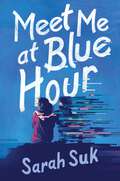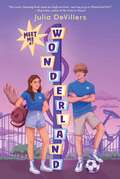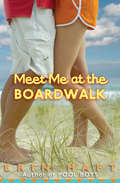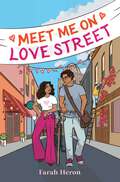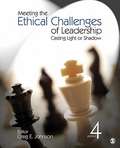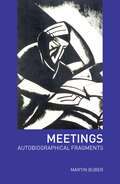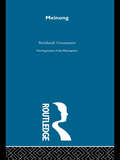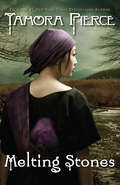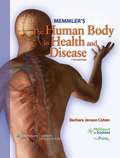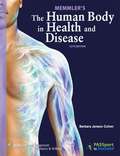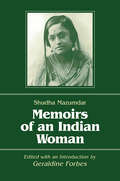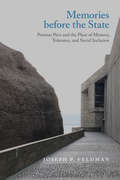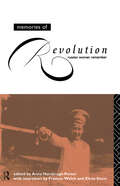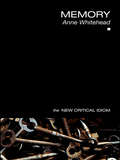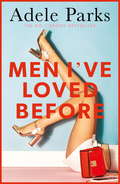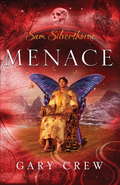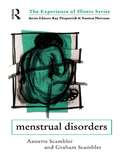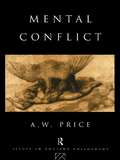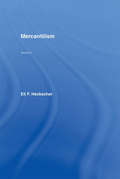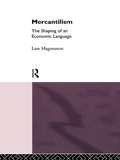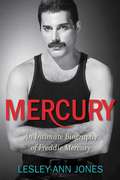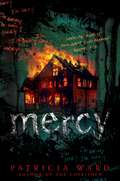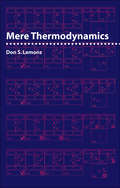- Table View
- List View
Meet Me at Blue Hour
by Sarah SukEternal Sunshine of the Spotless Mind meets Past Lives in this gripping, emotional story of two childhood friends navigating the fallout of one erasing their memory of the other, from acclaimed author Sarah Suk.Seventeen-year-old Yena Bae is spending the summer in Busan, South Korea, working at her mom’s memory-erasing clinic. She feels lost and disconnected from people, something she’s felt ever since her best friend, Lucas, moved away four years ago without a word, leaving her in limbo.Eighteen-year-old Lucas Pak is also in Busan for the summer, visiting his grandpa, who was recently diagnosed with Alzheimer’s disease. But he isn’t just here for a regular visit—he’s determined to get his beloved grandpa into the new study running at the clinic, a trial program seeking to restore lost memories.When Yena runs into Lucas again, she’s shocked to see him and even more shocked to discover that he doesn’t remember a thing about her. He’s completely erased her from his memories, and she has no idea why.As the two reconnect, they unravel the mystery and heartache of what happened between them all those years ago—and must now reckon with whether they can forge a new beginning together.
Meet Me at Wonderland
by Julia DeVillersA girl with a summer job at her family&’s amusement park crushes on a coworker who&’d rather be working anywhere else in this fun and flirty middle grade rom-com.Fourteen-year-old Coco is Morty the Moose for the summer—the official mascot for her family&’s business, Wonderland Adventure Park. Her first shift in the claustrophobic and stinky moose costume comes in the middle of a heatwave, and of course it&’s when she emerges a sweaty mess that her manager introduces her to the new hire, Henry…the cutest boy Coco has ever seen. Henry can&’t believe his parents are forcing him to work at this dorky theme park. He&’d much rather be hanging with his friends and working on his soccer game, but recovery from a bad injury would have kept him sidelined anyway. Being deathly afraid of heights, Henry hopes he can at least do his job without going on any of the rides. After their first awkward meeting, Coco and Henry start to warm up to each other, and Coco confides in him about the park&’s financial struggles. Soon, she thinks she like likes Henry…a lot. As the weeks go on, Henry&’s dad starts asking oddly specific questions about his job, and Henry starts to suspect there&’s more to his parents insisting on him working at the park than he thought. When a malfunctioning new ride leaves Henry and Coco stranded at the top, Henry&’s worst nightmare comes true and secrets get revealed.
Meet Me at the Boardwalk
by Erin HaftA sweet and frothy ode to summer romance on the beach and on the boardwalk, as only hip and hilarious POOL BOYS author Erin Haft could write it!Growing up in the resort town of Seashell Point, Jade, Megan, and Miles are best friends, and spend their summers working at the Clam Shack, making fun of the snooty summer people, and chilling on the boardwalk. But this summer, everything's different. Not only does Jade have her house to herself -- can you say parties? - but there's that tiny little issue of Megan's giant crush on Miles. Then there's the mysterious new girl who catches Miles's eye, and the threat that their beloved boardwalk will be torn down. This is one summer the friends will NEVER forget!
Meet Me on Love Street
by Farah HeronA teen tries to save her quickly gentrifying neighborhood—and make her cynical partner in festival-planning believe in love—in this opposites-attract romance perfect for fans of Lynn Painter and Sandhya Menon.Sana Merali is a certified hopeless romantic. It&’s inevitable when she literally lives on Love Street, a cute side-street full of mom-and-pop shops and cozy apartments. With her florist mother, her part-time job at a vintage shop, and her adorably curated wardrobe, Sana knows she&’s what meet-cutes are made of—and it&’s only a matter of time until her own HEA. When the neighborhood is threatened by new developments, however, her plans for love get pushed to the backburner as she and her neighbors rally to host a festival that will finally put the neighborhood on everyone&’s radar. Because what better way to get people to fall in love with Love Street? Unfortunately, Miles Desai is also on the planning committee. Miles is contrary, judgmental, and…anti-romance. His hard stance on love inspires Sana with another goal for the summer: to matchmake Miles and knock the cynicism right out of him. But as her set-up for Miles starts to actually work, Sana realizes that happily-ever-afters, for herself and for her street, aren&’t that easy to come by.
Meeting the Ethical Challenges of Leadership: Casting Light or Shadow, 4th Edition
by Craig E. JohnsonUsing the metaphor of light or shadow, Craig E. Johnson shows how leaders have the power to do significant good or harm. Taking an interdisciplinary approach to leadership ethics, and balancing theory and research with opportunities for application, the book provides self-assessments, cases and films to analyze, and exploration exercises.
Meetings: Autobiographical Fragments
by Martin BuberMeetings sets forth the life of one of the twentieth-century's greatest spiritual philosophers in his own words. A glittering series of reflections and narratives, it seeks not to describe his life in its full entirety, but rather to convey some of his defining moments of uncertainty, revelation and meaning. Recalling the question on the infinity of space and time which nearly drove Buber to suicide at the age of fourteen, his adolescent 'seduction' by Nietzsche's work, his hero-worship of Ferdinand Lassalle and his love of Bach's music, Meetings has no equal as a portrait of an unique intellect in progress. Like Buber's great works Between Man and Man and The Way of Man, it evokes a tactile, earthly concept of meaning ultimately found, as Maurice Friedman writes in his introduction, 'not in conceptual or systematic thought but in the four-dimensional reality of events and meetings'.
Meinong-Arg Philosophers (Arguments Of The Philosophers Ser.)
by Reinhardt GrossmannFirst Published in 1999. Routledge is an imprint of Taylor & Francis, an informa company.
Melting Stones (Circle Reforged Ser. #Bk. 2)
by Tamora PierceNew York Times bestselling fantasy author Tamora Pierce returns to the world of the Circle of Magic Quartet.Evvy, a young stone mage in training, is accompanying her mentor, Rosethorn, and another dedicate from Winding Circle while they investigate mysterious happenings on the island of Starns. Her job is to listen and learn, but, being Evvy, she can't just keep quiet and do nothing. With the help of Luvo, the rock being she befriended at her home in Yanjing, Evvy discovers the source of the problem - a long-dormant volcano. Now she and her friends must save the islanders from impending disaster - if only Evvy can use her talents to avert the certain destruction that looms ahead.
Memmler's The Human Body in Health and Disease (11th Edition)
by Barbara Janson Cohen Jason James TaylorThis widely read classic is an excellent primer on normal and abnormal anatomy, physiology and pathophysiology, basic microbiology, chemistry, and the human disease process. With a new design and a robust new multimedia electronic ancillary package, this Eleventh Edition will be even more engaging and understandable for students with diverse learning styles. This edition's new artwork includes real dissection photographs from Rohen's Color Atlas of Anatomy, Sixth Edition. New Disease in Context case scenarios integrated throughout each chapter show how content is applied to real-life situations. Icons direct students to relevant electronic materials.
Memmler's The Human Body in Health and Disease (12th Edition)
by Barbara Janson Cohen Kerry L. Hull Jason James TaylorMemmler's The Human Body in Health and Disease is a textbook for introductory-level health professions and nursing students who need a basic understanding of anatomy and physiology, the interrelationships between structure and function, and the effects of disease on body systems.
Memoirs of an Indian Woman (Foremother Legacies Ser.)
by Geraldine Hancock Forbes Shudha MazumdarThis vivid memoir recounts the experience of Shudha Mazumdar, a woman born at the turn of the century to Indian parents whose ideas on child rearing differed greatly. Her father, a wealthy Europeanized Zamindar, tried to instill Western values, while Shudha's mother emphasized the traditional, even going as far as arranging a marriage for her daughter when she was thirteen. Although true to Indian traditions, Shudha eventually manifested her father's influence by becoming a published writer, by becoming a member of a number of social service organizations, and by serving as the Indian Delegate to the International Labour Organization.
Memories before the State: Postwar Peru and the Place of Memory, Tolerance, and Social Inclusion (Genocide, Political Violence, Human Rights)
by Joseph P. FeldmanMemories before the State examines the discussions and debates surrounding the creation of the Place of Memory, Tolerance, and Social Inclusion (LUM), a national museum in Peru that memorializes the country’s internal armed conflict of the 1980s and 1990s. Emerging from a German donation that the Peruvian government initially rejected, the Lima-based museum project experienced delays, leadership changes, and limited institutional support as planners and staff devised strategies that aligned the LUM with a new class of globalized memorial museums and responded to political realities of the country’s postwar landscape. The book analyzes forms of authority that emerge as an official institution seeks to incorporate and manage diverse perspectives on recent violence.
Memories of Revolution: Russian Women Remember
by Anna Horsbrugh-Porter Frances Welch Elena SnowPreserving the childhood memories of some of the last generation of White Russian women to experience the revolution first-hand, this poignant collection of interviews and photographs provides a unique record of life in Russia.
Memory: A Reader (The New Critical Idiom)
by Anne WhiteheadThe concept of ‘memory’ has given rise to some of the most exciting new directions in contemporary theory. In this much-needed guide to a burgeoning field of a study, Anne Whitehead: presents a history of the concept of ‘memory’ and its uses, encompassing both memory as activity and the nature of memory examines debates around the term in their historical and cultural contexts introduces the reader to key thinkers in the field, from ancient Greece to the present day traces the links between theorisations and literary representations of memory. Offering a clear and succinct guide to one of the most important terms in contemporary theory, this volume is essential reading for anyone entering the field of Memory Studies, or seeking to understand current developments in Cultural and Literary Studies.
Men I've Loved Before: An unputdownable tale of modern-day marriage
by Adele ParksNeil and Nat seem to be perfectly matched. They hate Marmite and the opera. They love reality TV and the missionary position. And they both absolutely do not want children. At least that's what Nat thought. But now Neil seems to have softened to the prospect and he's practically begging her for a baby. Nat tries to ignore his change of heart and won't explain her reasons for hating the idea; she can't. Are they that compatible after all? As the cracks start to show, Nat wonders if Neil really is the man of her dreams. Or is it possible that someone from her past could actually be 'the one'?
Men in Arms: A History of Warfare and Its Interrelationships with Western Society
by Sydney F. Wise Richard A. PrestonTextbook in military history traces the development of warfare and relates it to the development of Western society. This edition (fourth, 1979) revises previous editions and updates the text to 1990.
Menace
by Gary CrewIn the second volume of the Sam Silverthorne series, Sam sets sail to China in search of a rare carnivorous butterfly. Before it is released in England and kills again he must track down the enraged Chinese Prince Chi Lin and stop him breeding more of the monstrous creatures. However, Sam discovers the British Empire can cause just as much devastation as the evil prince.
Menstrual Disorders
by Graham ScamblerWhat does modern medical science know about menstruation? Less than is commonly assumed, according to Annette and Graham Scambler. In this thought-provoking book, they challenge orthodox thinking on menstruation and disorders associated with it. Based on women's own experience and accounts of menstruation and menstrual disorders, their study will prompt health workers to rethink their approaches to menstrual phenomena. It shows how women are conditioned to regard menstruation as problematic, highlights the disadvantages as well as the advantages of progressive medicalization of menstrual phenomena, and discuss how menstruation is perceived within male culture.
Mental Conflict (Issues in Ancient Philosophy)
by A. W. PriceAs earthquakes expose geological faults, so mental conflict reveals tendencies to rupture within the mind. Dissension is rife not only between people but also within them, for each of us is subject to a contrariety of desires, beliefs, motivations, aspirations. What image are we to form of ourselves that might best enable us to accept the reality of discord, or achieve the ideal of harmony?Greek philosophers offer us a variety of pictures and structures intended to capture the actual and the possible either within a reason that fails to be resolute, or within a split soul that houses a play of forces. Reflection upon them alerts us to the elusiveness at once of mental reality, and of the understanding by which we hope to capture and transform it. Studying in turn the treatments of Mental Conflict in Socrates, Plato, Aristotle and the Stoics, A.W. Price demonstrates how the arguments of the Greeks are still relevant to philosophical discussion today.
Mercantilism: The Shaping Of An Economic Language
by Eli F. HeckscherFirst Published in 1995. Routledge is an imprint of Taylor & Francis, an informa company.
Mercantilism: The Shaping of an Economic Language
by Lars MagnussonEver since the Physiocrats and Adam Smith, mercantilism or 'the mercantile system' have been described as the opposite of classical political economy. This view is very much brought into question by the current book. It argues that the sharp distinction between mercantilism and 19th century laissez-faire economics has obscured the meaning, content
Merchant of Venice: No Fear Shakespeare Side-by-Side Plain English (No Fear Shakespeare)
by William Shakespeare SparkNotesThis No Fear Shakespeare ebook gives you the complete text of The Merchant of Venice and an easy-to-understand translation.Each No Fear Shakespeare containsThe complete text of the original playA line-by-line translation that puts Shakespeare into everyday languageA complete list of characters with descriptionsPlenty of helpful commentary
Mercury: An Intimate Biography of Freddie Mercury
by Lesley-Ann JonesA REVEALING, INTIMATE LOOK AT THE MAN WHO WOULD BE QUEEN As lead vocalist for the iconic rock band Queen, Freddie Mercury's unmatched skills as a songwriter and his flamboyant showmanship made him a superstar and Queen a household name. But despite his worldwide fame, few people ever really glimpsed the man behind the glittering façade. Now, more than twenty years after his death, those closest to Mercury are finally opening up about this pivotal figure in rock 'n' roll. Based on more than a hundred interviews with key figures in his life, Mercury offers the definitive account of one man's legendary life in the spotlight and behind the scenes. Rock journalist Lesley-Ann Jones gained unprecedented access to Mercury's tribe, and she details Queen's slow but steady rise to fame and Mercury's descent into dangerous, pleasure-seeking excesses-- this was, after all, a man who once declared, "Darling, I'm doing everything with everyone." In her journey to understand Mercury, Jones traveled to London, Zanzibar, and India--talking with everyone from Mercury's closest friends to the sound engineer at Band Aid (who was responsible for making Queen even louder than the other bands) to second cousins halfway around the world. In the process, an intimate and complicated portrait emerges. Meticulously researched, sympathetic yet not sensational, Mercury offers an unvarnished look at the extreme highs and lows of life in the fast lane. At the heart of this story is a man . . . and the music he loved.
Mercy
by Patricia WardPerfect for fans of Sawkill Girls, Bone Gap, and Dark and Shallow Lies, this suspenseful contemporary mystery delves into a small town’s supernatural, multigenerational curse—and the girl determined to break it.Mercy was named for her mother’s hopes.Mercy, in the hope that the Sorrowing—the curse that Mercy and her family had lived with for generations—might take pity on them.But Mercy’s name never did her any good, and it certainly didn’t save her mother.The Sorrowing ensures that Mercy, her family, and the core families in Arbor Falls aren’t able to grow, dream, or prosper. It makes sure they stay exactly as they are—mired in the mud. Mercy has learned to live with the truth: the only way to escape the Sorrowing is to accept it.Until the Bowens move back to town.The Bowens are a cursed family, too, and they should know better than to test the Sorrowing. Instead, their ignorance sets off a wave of fury that promises to destroy everything.Now, Mercy will have to unearth the horrors that unfolded that terrible night the Sorrowing was born—to face the despicable secrets of her town and break the curse before it breaks everything she has left.An immersive mystery laced with supernatural dread that's perfect for fans of of Courtney Gould and Kyrie McCauley, Mercy slowly and relentlessly digs into the buried crimes of a small, insular town and provokes questions about the lies we silently allow and the duty current generations have in exposing the harms of the past.
Mere Thermodynamics
by Don S. LemonsPresenting classical thermodynamics as a concise and discrete whole, Mere Thermodynamics is a perfect tool for teaching a notoriously difficult subject.Accomplished teacher Don S. Lemons introduces the physical theory's concepts and methods and uses them to solve problems from a broad range of physics. He illustrates, at a gentle pace, not only the fundamentals of the subject but also advanced topics such as the relationship between the second law of thermodynamics and entropy. He highlights the intellectual structure and history of the discipline and explores the logical consequences of each of the famous three laws. Lemons explains and develops the first two laws and their corollaries, the methods and applications of thermodynamics, and the third law, as well as non-fluid variables, equilibrium and stability, and two-phase systems.The book features end-of-chapter practice problems, an appendix of worked problems, a glossary of terms, and an annotated bibliography.
